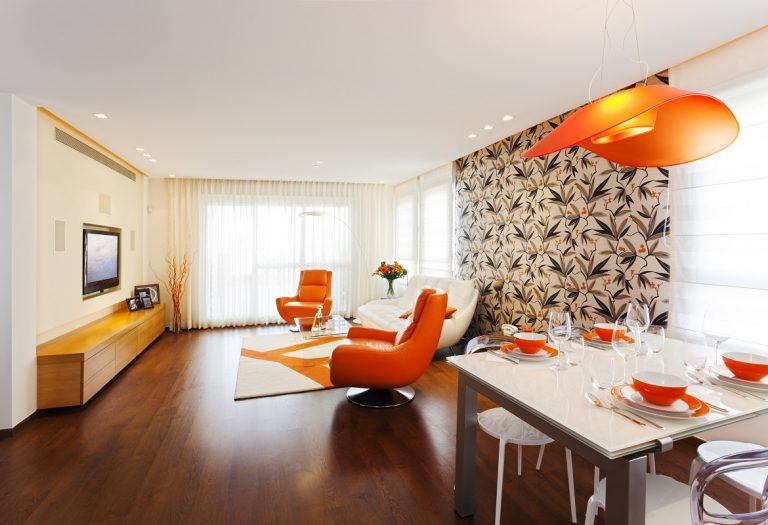- Monitor air quality indoors and take steps to purify it, such as installing an air purifier with HEPA filters and avoiding harsh chemicals.
- Ensure safe and clean drinking water by installing POU filtration systems or residential water systems.
- Maximize natural light exposure with skylights, windows, mirrors, and light shelves.
- Improve health and well-being by creating a healthier home environment that promotes mental, physical, and emotional health.
A healthy life is more than just eating nutritious foods and exercising regularly. Creating an environment that promotes mental, physical, and emotional well-being is essential to maintaining a healthy lifestyle. This means being mindful of your home space, both inside and out.
From air quality to natural sunlight exposure to environmental noise levels, each element is vital to one’s overall health. Studies show that even minor environmental improvements can significantly affect people’s health-related activities – such as sleeping, working, eating, and socializing.
However, you might not know what changes you need to make to improve your home environment. The following are some elements to consider when creating a healthier home:
Air Quality
Air quality is a crucial factor to consider when striving for a healthy home environment. Poor air quality can damage physical and mental health by causing respiratory issues such as asthma, coughing, and allergies. It can also contribute to fatigue, headache, difficulty concentrating, and other symptoms of poor air quality.
Therefore, monitoring the air quality inside the home is essential. There are various steps homeowners can take to improve their indoor air quality. These include:
- Installing an air purifier with HEPA filters – This type of filter removes 99% of all airborne particles, including dust, mold spores, pet dander, and pollen.
- Ensuring that ventilation systems are in good condition – Proper ventilation ensures fresh outdoor air enters the home while contaminants like smoke and odors are removed.
- Keeping the home clean – Regularly vacuuming carpets and rugs helps reduce dust levels indoors, which could aggravate allergy-related symptoms.
- Avoid using harsh chemicals for cleaning tasks – Paints, solvents, aerosol sprays, and other products should be used sparingly or avoided entirely if possible due to their potential for releasing volatile organic compounds into the air that may worsen indoor air quality.
- Incorporating greenery into living spaces – Plants help naturally purify the air by absorbing carbon dioxide and releasing oxygen into the environment.
By taking these simple steps and monitoring your home’s air quality regularly, you can ensure that your living space is free from pollutants while promoting a healthier lifestyle at home.
Clean Water

Clean water is essential for good health and well-being. It provides the basic hydration needed to live, and clean water also plays a crucial role in other health-related activities, such as food preparation, hygiene practices, and general sanitation.
Unfortunately, some homes may have water contaminated with bacteria or other contaminants, which can cause health problems if consumed or used in everyday activities. Therefore, ensuring your home has safe and clean drinking water is essential.
One way to ensure you have access to safe and clean drinking water is by installing a point-of-use (POU) filtration system. These systems are designed to reduce contaminants such as bacteria, lead, and chlorine from your home’s tap water. Depending on the type of filter used, they can also remove sediment particles and increase the taste and smell of your tap water.
You can also get reliable residential water systems installed in your home. These systems provide access to clean and drinking water from any tap in the house and can help reduce contaminants such as lead, bacteria, and chloramines.
Natural Light Exposure

Natural light is an essential element of home environments and has been linked to improved health and well-being. Studies have shown that exposure to natural sunlight can help reduce stress, improve mood, and boost energy levels. It can also enhance the quality of sleep by helping regulate circadian rhythms.
Fortunately, there are a few ways to get natural sunlight inside the home:
Install Skylights
Skylights are a great way to introduce natural light into the home. They provide an easy illumination source while allowing fresh air in from the outdoors. Skylights come in various shapes and sizes to be used in any space or room in your home. Installing skylights on south-facing walls can help maximize the sunlight entering your living space throughout the day.
Utilize Windows
Windows are an effective way to bring natural light into the home without installing additional fixtures or equipment. If you don’t have enough windows in your home, you may consider adding more or replacing some of your existing ones with larger windows that offer better views of the outdoors. You can also opt for installing solar window films on existing windows as a cost-effective way to increase daylight within rooms while providing additional insulation benefits during colder months.
Mirrors
Mirrors are another easy way to bring in natural light without making structural changes to your home. Mirrors help reflect light throughout rooms while creating a sense of spaciousness and airiness inside living spaces. They also act as decorative elements that enhance one’s interior design scheme while providing functional lighting benefits at different times throughout the day.
Light Shelves
Light shelves work similarly to mirrors by reflecting sunlight onto ceilings and walls, where it gets naturally diffused throughout spaces rather than beaming directly onto furniture or other surfaces inside rooms. You can place light shelves in any room facing a window to enhance natural lighting without compromising privacy.
Final Thoughts
By considering these elements and making small changes, you can create an inviting and healthier environment at home. From improving air quality to ensuring access to clean water and maximizing natural light exposure – optimizing your home environment is essential for maintaining a healthy lifestyle.











